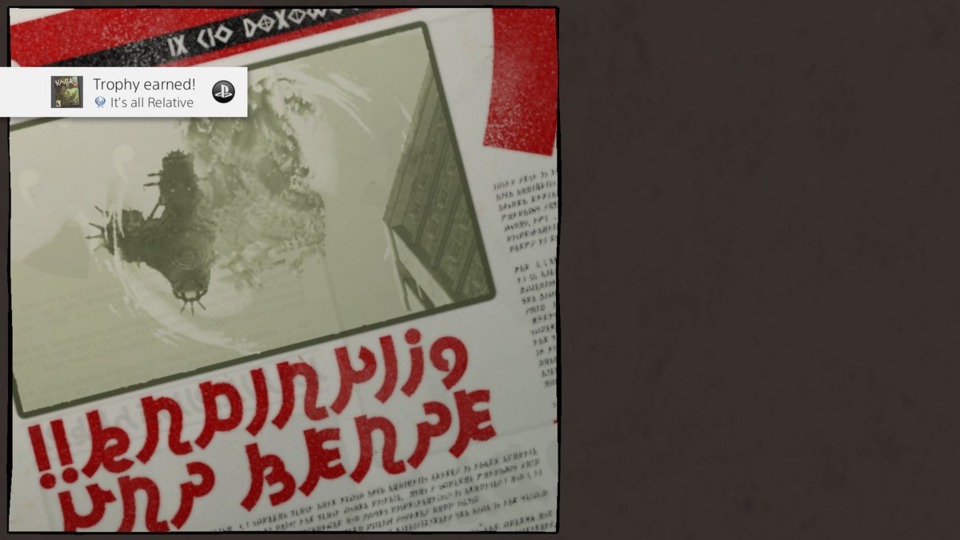Sunday Summaries 25/09/2016: Gravity Rush: Remastered & Dragon Quest Heroes
By Mento 2 Comments
It's fair to say that, so far at least, this year has been heavy in open-world games for me. Not just small ones either, but the type that were built to last months. I'd liken a few of these to the Bethesda model of creating far more content than the core story thread requires and letting players "find their own fun", as it were, in a world full of possibilities. We've also learned this year that such lofty pretensions can come crumbling down if that inessential optional content fails to entice - we see it in GBEast's playthrough of Sega's Shenmue, which pioneered a lot of both positive and negative aspects to what was then a burgeoning format (I spoke more about it with this article), and in the response to Hello Game's No Man's Sky which, for all its braggadocio about having quintillions of planets, basically had you repeating the same handful of objectives over and over.
So far this year I've played through the following open-world games: Fallout 4, Citizens of Earth, Assassin's Creed Syndicate, Bloodborne, Oceanhorn, The Witcher 3: Wild Hunt, InFamous Second Son, The Talos Principle, Middle-earth: Shadow of Mordor, Tales of Xillia, Stardew Valley, Metal Gear Solid V, Divinity: Original Sin and Gravity Rush: Remastered. Though they have significant gameplay differences, there's no getting around the fact that they all drop you in gigantic open worlds and let you poke around its content with a central line of plot missions that only occasionally interferes with your aimless peregrinations.
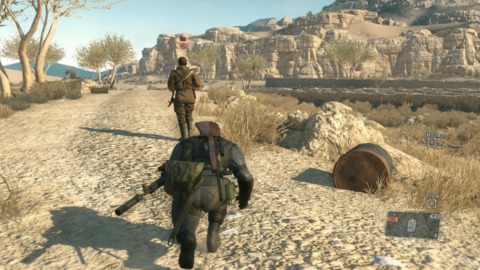
What's curious about this format's current prevalence is the amount of extra effort it must take developers to create a game of that type. It's a two-part process that adds a significant boost to their workload: the creation of the open-world in question, which requires studying architecture, historical settings and urban geography if the game's based in a city or cities, with some additional creative effort for those worlds that exist in a fantasy universe where the rules can be tweaked in various directions. Then there's filling that world with enough additional content to make it worth wandering off the beaten path and taking advantage of the format, not to mention justifying the amount of effort that went into creating all this geography in the first place. And yet, despite all this extra effort, this format has become the de facto means of presenting a video game in this generation.
I'm not necessarily saying we need to go back to creating games with a very rigid storytelling structure that railroads you from one set-piece to the next. We all learned our lesson from Final Fantasy XIII. However, I'm sure a happy medium can be found in there somewhere. I've yet to play the new Doom reboot (it's on the list, I swear), but its return to smaller enclosed levels that still offer enough nooks and crannies for secrets and the like isn't a particularly outdated notion for other games, including those not explicitly invoking the past, to revisit.
I'm not really sure what I'm saying here. The obvious and non-confrontational way to fix this little problem of playing too many gigantic games this year and next is to... well... not do that. At the same time, it seems like every big game this year that has some cool ideas or a neat premise or a lot of acclaim or has otherwise appeared to be way up my street has been an enormous open-world game too, and I can't really do anything about the part of my brain that wants to complete as much of a game as possible before I'm able to leave it behind satisifed. It's the "can't just sing part of Come Sail Away by Styx" syndrome. Maybe it's time to make a more concerted effort to explore the Indie scene for a while, because right now the next three retail games I intend to play have a collected average run time of about 150 hours, according to HowLongToBeat.com. (Though, granted, most of that is Xenoblade Chronicles X.)
Mento problems! Am I right? Let's move onto the usual Summaries:
New Games!
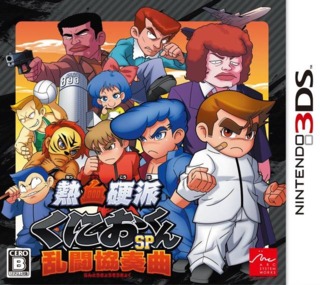
It's not a particularly exciting week for consoles in general, but the 3DS is having quite an eventful few days. For Nintendo's soon-to-be-defunct double-screened wonder, we have Million/Arc System Works/Natsume's Kunio-kun reboot River City: Tokyo Rumble coming to North America. Released to coincide with the series' 30th anniversary, which started with 1986's Renegade, River City: Tokyo Rumble is an adaptation of River City Ransom with a whole lot more goofy in-jokes and extra modes to celebrate the many years of Kunio-kun hitting people in the face and making them say BARF, occasionally using dodgeballs instead of his fists. We only saw a barest handful of Kunio-kun localizations in the West, so I imagine a lot of those references will fly over our heads like a thrown garbage can, but it should still make for an interesting throwback for RCR fans.
The 3DS also sees the English localization of Level-5's Yo-Kai Watch 2, coming in both Bony Souls and Fleshy Spirits flavors. The series expertly bridges the gap between the cartoonish and pun-friendly Dragon Quest and the monster collecting/raising fun of Pokémon, which may well be the two biggest franchises in Japan that don't involve carving out dinosaur butts to make leather armor, and the first game did reasonably well over here too. As an avowed wordplay pundit, I'm also curious to see what new examples of terrible portmanteaus the localization team have come up with for this sequel's many new spooky additions.
Our third big 3DS release is another sequel: Azure Striker Gunvolt 2 from Inti Creates, the developers behind many of the final Mega Man games like the Zero series, ZX duo, and the reboots 9 and 10 (and IGA's Bloodstained, coming soon). I haven't been following this series too closely, but its marketing at the time made it feel like the warm-up act for Mighty Number 9, and I think history has proven that the Gunvolt games were ultimately the better Mega Man successors. Both this sequel and its predecessor will be bundled together and sold as the Azure Striker Gunvolt: Striker Pack, which seems like the best option for those like myself who have yet to try either of them. Well, as long it turns out all right, at least. I trust that Yacht Club Games - the Shovel Knight developers who are publishing the compilation in North America - know 2D platforming quality when they see it.
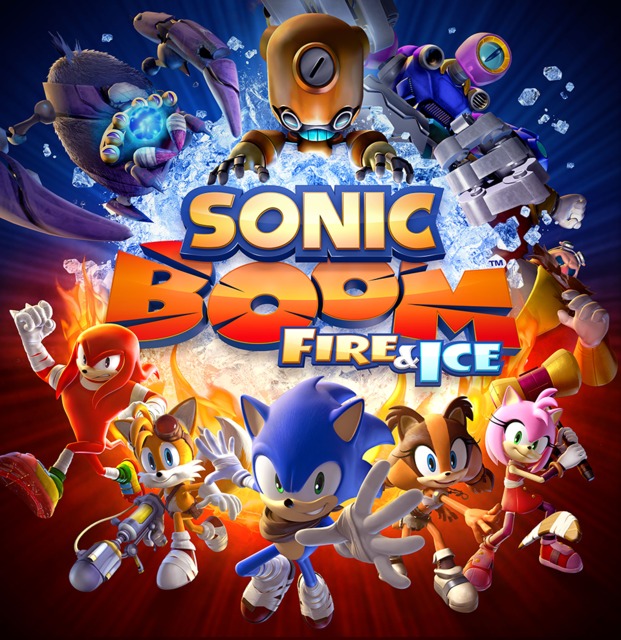
Speaking of quality platforming, the 3DS will also see Sonic Boom: Fire & Ice this week. Fire and ice is, of course, a prime example of two things that don't combine particularly well, sort of like Sonic the Hedgehog and 3D. The first Sonic Boom game's well-earned reputation for being a completely broken mess should mean that Fire & Ice has nowhere to go but up, but for every bouncy spring in Sonic's world there's a wall of spikes to fly directly into at mach speed. I don't think anyone's hopes are high, so it'll be curious to see if Fire & Ice can somehow break the Sonic cycle and produce a decent... yeah, I'm not really convinced either. Maybe its focus on younger audiences will mean that the kids will learn some valuable life lessons, at least. Well, besides "caveat emptor".
Rounding off the new games this week, beyond the ports I'll talk about in a moment, we have the annual soccer game FIFA '17 coming to everything, including last-gen systems. Its primary competition, Pro Evo Soccer 2017, did EA a solid by completely bungling its PC launch for the second year in a row (thanks Konami) so I imagine this'll be the video game soccer fan's pick this year. I'm more concerned that the very busy freelance documentarian Danny O' Dwyer won't find the time to teach the apathetic GBWest boys the right way to kick a ball around again.
Port news, to round us out: The erstwhile PC exclusive XCOM 2 is coming to current-gen consoles, which might be where I finally jump in. Ditto for Darkest Dungeon. SteamWorld Heist is also hitting Wii U this week, almost a year after its initial 3DS launch and after ports for the PS4, PS Vita and Steam back in June. That's... kind of devastating for Nintendo's second-best system. Good thing it's a video game console and not a person, because that is some harsh "getting picked last for the team" business to deal with. Finally, Freud fans can take on the not-at-all-worrisome fun of blasting schoolgirl animes in the face with their love bullets in the Steam release of Gal Gun: Double Peace this week.
Wiki!
Happy to report that 1991's PC Engine library, at least the games released on HuCard, are now all accounted for in our wiki. I'll be moving onto 1992 presently, but I also want to update my Wiki Project series of blogs for this new milestone. With that in mind, I'm just going to super briefly summarize the fifteen pages I worked on this week for the sake of leaving something for that eventual blog to cover:
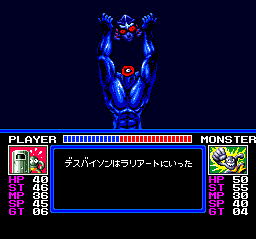
- World Circuit: I was in two minds about adding this as a new page, as World Circuit is simply Family Circuit with a new name. I think I've brought this up before, but Namco created a series of sports games for the Famicom that had the simple naming structure of "Family [Sport]" - the Family part coming from the name of Nintendo's console in Japan, the Family Computer. Those same sports games were called "World" on every other system. Besides that tidbit, this is just another top-down F1 racing game, albeit one created by Namco. Expect it to be a little more Arcade-y than the norm.
- Gradius: Konami's famous side-scrolling shoot 'em up saw a belated PC Engine port as well, and it's a fairly solid one as far as early home conversions of the Arcade game go. The PC Engine version would also be the one to make it to Wii Virtual Console.
- Monster Pro Wrestling: An utterly bizarre turn-based and largely luck-based wrestling game featuring mutant wrestlers beating the crap out of each other with absurd moves. While an objectively terrible game, something about its Looney Tunes attack animations is endearing.
- Coryoon: A cutesy shoot 'em up, following in the likes of Ordyne, Parodius and Magical Chase. The player's baby dragon protagonist can adopt different elemental disciplines as their power-ups, and hold in their breath for a charge attack. The look and vast amount of fruit everywhere makes it feel like an Adventure Island spin-off.
- Shogi Shoshinsha Muyou: it's a shogi game, so I have no idea what's going on. I wasn't able to decipher the title - it literally translates to "Shogi Beginner Useless". Maybe it's suggesting it's shogi training for complete no-hopers?
- Super Metal Crusher: Odd robot-raising sim in which you pump points into your robot buddy's stats and let them fight other robots automatically. Imagine Custom Robo without the gameplay.
- Fighting Run: More mechanical weirdness with this cyborg racing battle thing. Two buff androids sprint down a corridor, bashing each other into the various traps and obstacles in the way. Does not play well.
- Salamander: Following right behind its forebear Gradius is Salamander, the game's half-sequel, half spin-off. The game's better known in the US as Life Force, but it began in the Japanese Arcade without much of the gooey viscera that made Life Force distinct. This is a conversion of that original Salamander.
- Doraemon: Nobita no Dorabian Night: I kinda figured I wouldn't be done with Doraemon platformers after switching from the Super Famicom to the PC Engine. Dorabian Night was one of a rare handful of PC Engine games, along with the Bonks, to be released on both CD and HuCard formats.
- Bubblegum Crash: As far as I know this is the only Bubblegum Crash video game adaptation, barring a PC-88 game that wasn't named for the show but featured its all-female exo-suited Knight Saber mercenary team. Despite using a license all about anime ladies kicking ass, the game's a story-driven graphic adventure with a handful of action mini-games.
- Genji Tsuushin Agedama: I covered this licensed licensed endless runner/platformer/shoot 'em hybrid back in TurboMento. I guess I was lying last week when I said Dragon Egg was the last of the HuCard games I exhibited. Actually, we still have the PC Engine version of Tower of Druaga and that weird photography game Gekisha Boy to go as well.
- Spiral Wave: I was temporarily excited to work on this one, until I realized it wasn't a game based on the TV show Spiral Zone. Instead, it's an open-world-ish space sim that has a lot of Z-axis combat between dialogue scenes with aliens.
- Niko Niko Pun: A platformer for babies, based on an anime that was in turn based on a kid's TV show featuring actors in animal costumes. It's an extremely gentle game: it doesn't even have a health bar.
- Super Momotarou Dentetsu II: One of a few PC Engine games to see a crossover with the Super Famicom - the two systems were a few years apart, barring a brief overlap in the 90s, and most of the PC Engine's library (and the Super Famicom's library for that matter) were exclusives. Wouldn't stop this wildly popular railroad board game sim from appearing everywhere, though.
- Dragon Saber: The last HuCard game of 1991 was this Arcade conversion of the sequel to Namco's Dragon Spirit, once again dragging dragons into a shoot 'em up. Dragon Saber was released on a few systems, and rereleased a few times on Virtual Console as well, but it was never localized for the West.
Gravity Rush: Remastered!
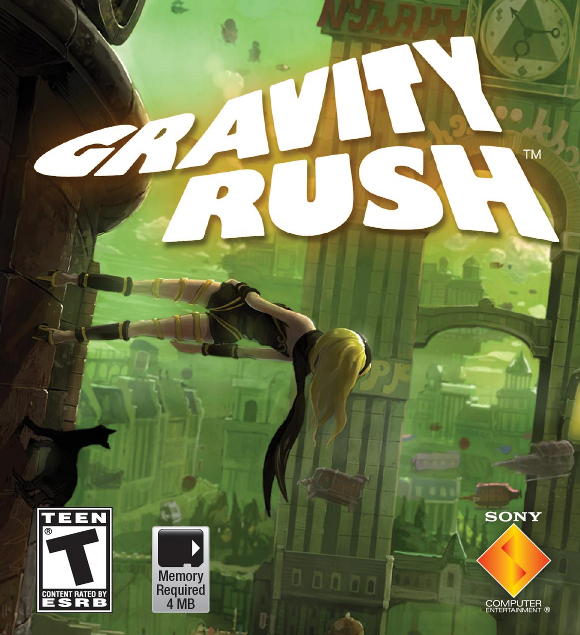
With the final adventures of Kat in the floating village of Hekseville, Gravity Rush: Remastered paradoxically both sticks to its guns and goes completely off the rails. Unfortunately, I can only remark on the former, as the latter requires going into the game's late plot. Actually, I still want to talk about it, and I imagine enough people have seen through the game back when it was on Vita. I'll just put that behind a spoiler block a little later on, then.
Gravity Rush, as we discussed last week, builds the entirety of its gameplay around the gravity switching mechanic. Kat can temporarily divorce herself from Newton's universal force and realign herself to various surfaces regardless of how the pull of gravity might suggest otherwise. She can also extend her powers to include other objects and people, using a power named the stasis field. A lot of the gameplay involves moving around rapidly through a sort of gravity-alternating flight and fighting various monsters by floating around to where their vulnerable spots are visible and plowing into them with devastating dive-kicks. It's not a perfect system, but you get a lot of practice with the game's general strategy of dumping a large number of enemies on you and tasking you with defeating them all before the plot will advance. Gravity Rush is not a particularly long game, fortunately, so it doesn't quite wear out its handful of ideas. Certainly gets close though, and its central idea of escalating the game's difficulty by making bigger monsters with more weak points to crush isn't a particularly gratifying one.
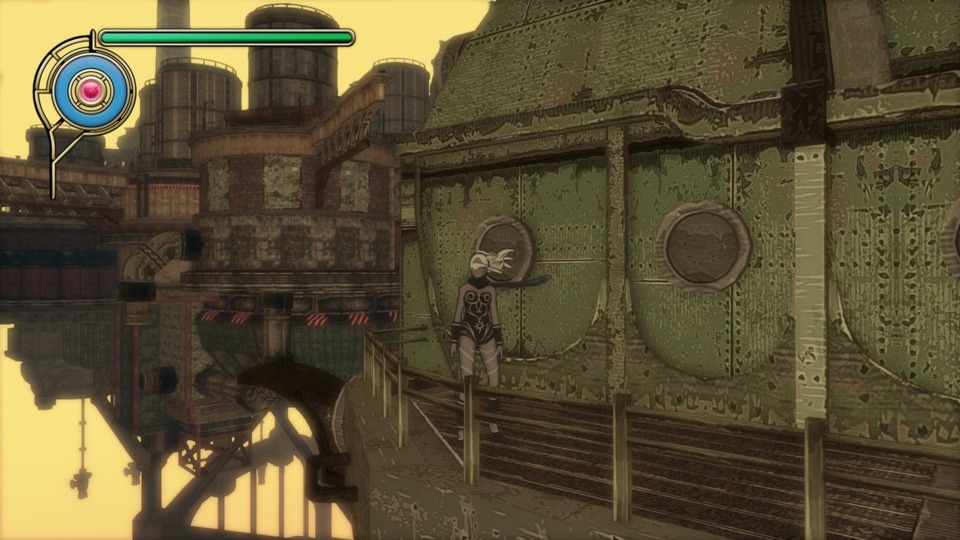
I had more fun exploring the districts, ultimately. The game's free-floating mechanics lent themselves better to stress-free scenarios where you weren't forced to fight or fly as quickly as possible, instead letting you chill out by hovering around and gently spinning on your axis while scanning the horizon for the telltale pink gleam of collectible gemstones, which could then be spent on upgrades - health, damage, etc. - to make the more hurried portions of the game more palatable. I generally liked the game's comic book interstitial cutscenes, its characterization of its central character as a lonely girl with no history and plenty of moxie and, well, where the story unexpectedly goes about midway through the game. Spoiler time:
Anyway, it's definitely made me curious to see what Gravity Rush 2 will be like. There's so much for a sequel to look into, whether that's delving more into the big narrative questions outlined in the spoiler section above, finding new implementations of the gravity-switching mechanic beyond the handful of powers in the original, and exploring ways to improve the game including but not limited to having less emphasis on bashing weak points over and over. If Gravity Rush has anything, it's potential for greatness. As it is, it's a fine if somewhat repetitive open-world game that has an compelling central mechanic that it just doesn't find enough to do with.
Dragon Quest Heroes: The World Tree's Woe and the Blight Below!
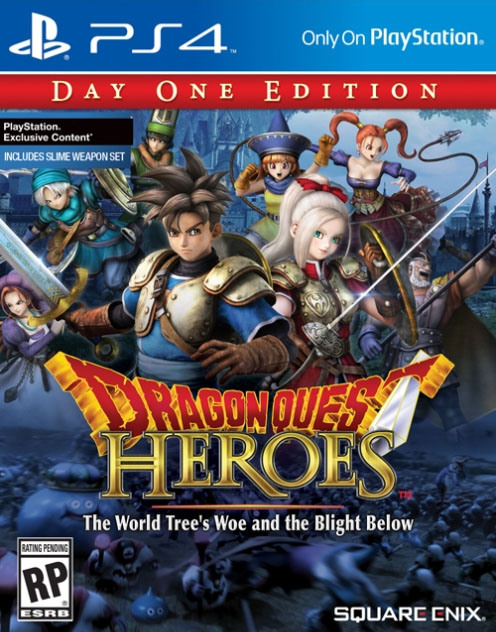
Though that isn't to say that repetition doesn't have its own appeal in the right context. I'm surprising myself with how much I'm enjoying Dragon Quest Heroes, given that it's both a Dragon Quest game and a Musou game. I bounced off Dragon Quest IX because it was so densely packed with optional material (see my diatribe at the lede about open-world games and their effect on my psyche) and I've generally felt that most Musou games are built to wring 200 hours of game time out of a gameplay model that would be fun for about 1% of that length.
Yet, the two game series somehow complement each other here. By having the fast-paced bashing of a Musou game, the slow turn-based Dragon Quest series suddenly adopts a more palatable tempo, allowing you to plow through the hundreds of slimes and drackys you'd usually encounter in any given DQ game in a matter of seconds instead of hours. Likewise, the RPG hooks and usual DQ mechanics like an alchemy crafting system, the limit break-style tension, and creating parties that feature a diverse array of talents and fighting styles that the player is free to alternate makes the usual crowd-control combat more enticing than the cast of Chinese Melrose Place that is the drama-wrought Dynasty Warriors universe. Like many Musou spin-offs, the game is simplified to only focus on the core tenets of its particular series, in this case Dragon Quest's traditional role-playing model.
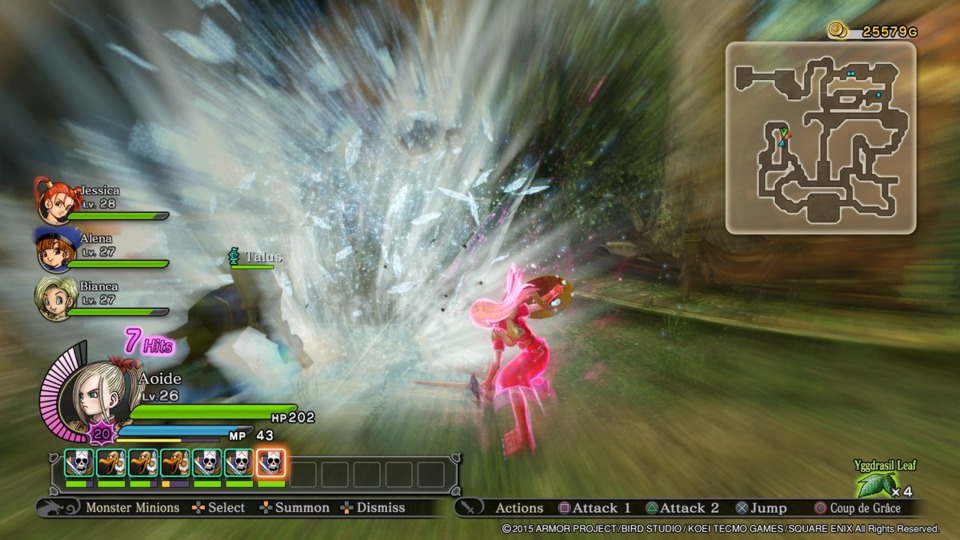
There are some universal issues with the Musou format that are still prevalent here, though, the most significant of which is the over-reliance on the "protect a thing" mission. In the history of video games, "protect a thing" has never been fun, because you're relying too much on a third party staying alive while you're more inclined to move at your own pace and do your own thing. Dragon Quest Heroes is built in such a way that every map will inevitably generate an object or person you have to protect and have enemies warping in from every angle. The goal of almost any given map is to find these portals that monsters are pouring out of, each of which is guarded by a "mawkeeper" enemy that needs to be defeated before the portal will close, and then hightailing it back to the thing you have to protect before there's enough breathing room to go after the next portal. The game makes this slightly easier by giving you a means to warp around the battlefield, as well as the ability to command "sentry" monsters that protect the immediate area after being summoned, but all too often you're balancing dashing to these portals to close them and running back to, well, protect a thing.
Despite this, the game's fun in the moment, using your various powers to smash hundreds of smiling blobs into goo and it's an especial treat for long-time series fans due to its many cameos. Alena, Kiryl and Maya from Dragon Quest IV, Bianca and Nera from Dragon Quest V, Terry from Dragon Quest VI, and Yangus and Jessica from Dragon Quest VIII are some of the peeps I'm rolling around with presently, along with four great characters created for this game - the two protagonists (you can select to play as either, and the other becomes your first party member), the boisterous King who delivers every statement like he's Brian Blessed, and a boomerang-flinging flirtatious inventor who is responsible for your airship base and various other useful tools. The localization has been top-notch too, filled with suitably Shakespearean inflections and prose and a gamut of accents that cover the entire British Isles toe to tip (and, in the case of Alena and Kiryl, a vaguely uncomfortable pidgin Russian).
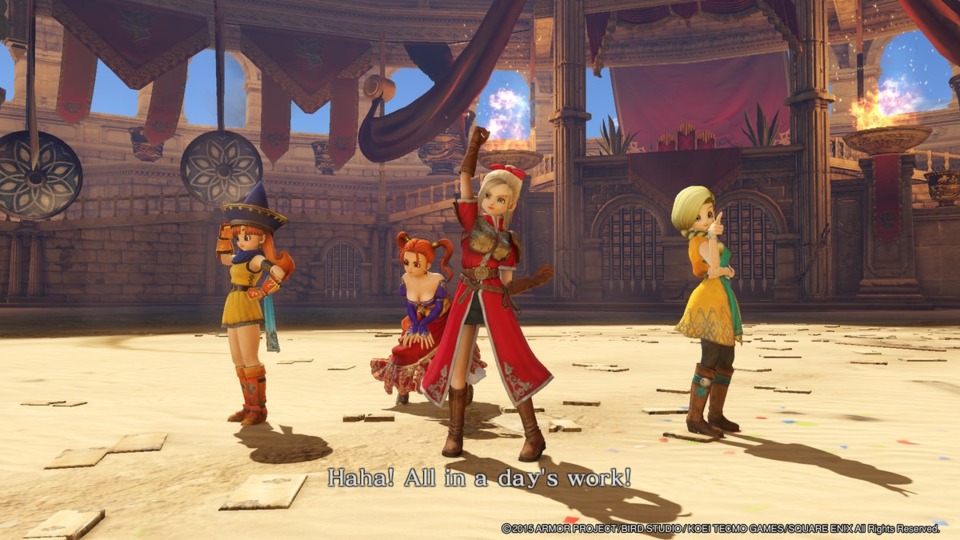
I'm sticking with it because unlike many games of its genre I don't think it'll last forever, and despite the repetitive mission structure it's still fun to throw down against huge hordes of goofy monsters using the various combos and specials at your disposal. The boss fights have been a particular highlight, as each has its own quirks and mechanics to exploit. Makes me wish that same level of ingenuity could've been applied to the rest of the game, but Musou has always been a glorified form of tower defense so I ain't buggin' too much. Still, if I can find enjoyment in a Musou game linked to a franchise that I only sort of like, that makes me more curious to try out those that employ a franchise I'm very much into - Hyrule Warriors and the upcoming Berserk and the Band of the Hawk come to mind. Man, I'm fully crossing over to the dark side now, aren't I?

